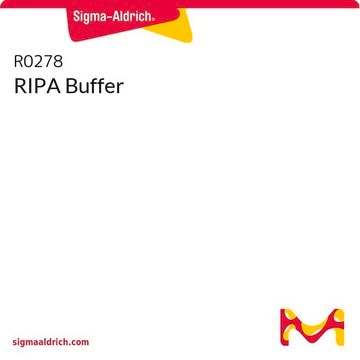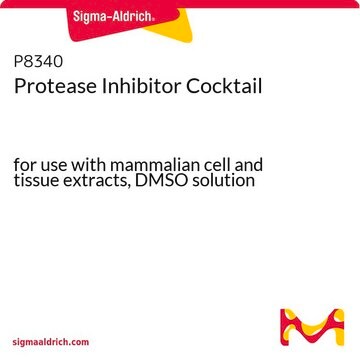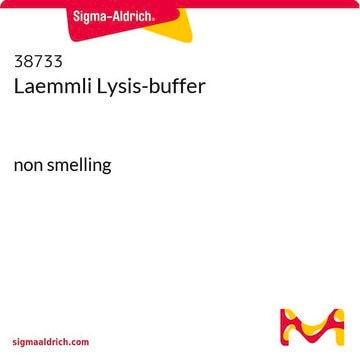RIPA Buffer enables the extraction of cytoplasmic, membrane, and nuclear proteins. Certain proteins are more soluble in RIPA buffer than others.
20-188
Tampón de lisis RIPA, X10
100 mL RIPA Lysis Buffer, 10X for Immunoprecipitation & Western Blotting.
Sinónimos:
lysis buffer
About This Item
Productos recomendados
form
liquid
packaging
pkg of 100 mL
manufacturer/tradename
Upstate®
technique(s)
immunoprecipitation (IP): suitable
western blot: suitable
shipped in
ambient
General description
Application
Physical form
Storage and Stability
Legal Information
Disclaimer
signalword
Danger
hcodes
Hazard Classifications
Aquatic Chronic 3 - Eye Dam. 1
Storage Class
10 - Combustible liquids
wgk_germany
WGK 3
Certificados de análisis (COA)
Busque Certificados de análisis (COA) introduciendo el número de lote del producto. Los números de lote se encuentran en la etiqueta del producto después de las palabras «Lot» o «Batch»
¿Ya tiene este producto?
Encuentre la documentación para los productos que ha comprado recientemente en la Biblioteca de documentos.
Los clientes también vieron
-
Can this lysis extract protein from the Nucleus?
1 answer-
Helpful?
-
-
How long can 1x RIPA lysis buffer be stored with or without the protease?
1 answer-
This product is stable at room temperature for 6 months from date of shipment. Protease and phosphatase inhibitors should be added immediately prior to use.
Helpful?
-
-
I used the 10X RIPA buffer to lyse my cultured cells. How can I do next? Will it affect the protein quantification by using BCA assay kit? Also, will it affect the SDS-PAGE and Western blot?
1 answer-
Protein samples prepared from cell culture lysates using this 1X RIPA buffer are typically compatible with downstream applications such as BCA assay, SDS-PAGE, and Western blotting. The concentrations of salts and detergents present in the 1X RIPA buffer are relatively low, minimizing interference with these techniques.
Helpful?
-
-
Can we store it a 4 degree, if we want to use it after 6 months?
1 answer-
Studies have not been performed to determine if refrigerated storage will extend the shelf life of this product. The end user would have to determine suitability if used after the recommended 6 months. Note that product R0278, a 1X Ripa Buffer, is stored refrigerated and includes a warranty of 1 year from the date of shipment. Please see the link below to review this product datasheet:
https://www.sigmaaldrich.com/deepweb/assets/sigmaaldrich/product/documents/350/775/r0278bul.pdfHelpful?
-
-
Someone in lab left the 10X RIPA Buffer in room temperature for overnight. Will it affect the quality of the buffer? Could we continue to use it?
1 answer-
This product does not require refrigeration and is stable at room temperature for up to 6 months.
Helpful?
-
-
Do I used distilled water to dilute to 1X?
1 answer-
The 10X RIPA Lysis Buffer should be diluted with nine parts sterile, distilled water.
Helpful?
-
-
Do I have to dilute to 1X for protein isolation?
1 answer-
Yes, RIPA lysis buffer should be diluted to 1X prior to use.
Helpful?
-
Active Filters
Nuestro equipo de científicos tiene experiencia en todas las áreas de investigación: Ciencias de la vida, Ciencia de los materiales, Síntesis química, Cromatografía, Analítica y muchas otras.
Póngase en contacto con el Servicio técnico











